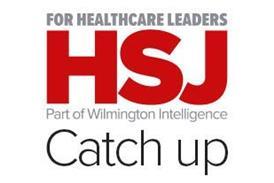Ed Palferman at Global Healthcare Exchange (GHX) explains how the use of technology will be a step toward a successful NHS procurement system

This article was part of the eProcurement channel, in association GS1. The channel is no longer being updated.
There is a striking parallel between the new NHS e-procurement strategy and Bob Dylan’s Blowin’ in the Wind.
There is an ambiguity inherent in Dylan’s breakthrough record. When he sings that “the answer, my friend, is blowin’ in the wind”, does he mean that the answer is so obvious that it is right in front of you?
Or is it more a case that the answer is intangible and almost impossible to get a hold of?
Or, perhaps he means both simultaneously?
- New e-procurement system could see the NHS open for international business
- The government’s e-procurement strategy: the essentials
- What the retail industry can teach the NHS?
- More from the e-procurement channel
Common sense strategy
The new e-procurement strategy, published in May by the Department of Health, brings this to mind because, in its 30 odd pages, it paints a very straightforward picture of NHS procurement as it should be conducted.
Simple, transparent and fit for purpose - it is an exposition of common sense that presents an answer to many of the woes that have beset NHS procurement. Yet, the vision outlined is an aspiration that has escaped the health service for many years.
‘The achievement of a working procurement system still eludes the NHS’
While there have been pockets of excellence in general, the NHS has been something of a laggard when it comes to realising the benefits of technology in its supply chain.
It was the summer of 1974, 11 years after the release of Dylan’s Blowin’ in the Wind, when a pack of Wrigley’s chewing gum became the very first product to be scanned using a Universal Product Code in the retail industry.
Forty years on and the NHS has not widely adopted the same technology. This is despite the huge sums spent by the NHS on procuring goods and services each year, around £20bn.
Better visibility needed
Many business transactions are still conducted via phone, fax or email. These methods require inefficient supporting processes and do not provide visibility into what the NHS is procuring.
Better control starts with better visibility. In a procurement environment as large and diverse as the NHS, the only plausible way to gain visibility is through the application of technology.
Understanding what the NHS buys, from whom, and for how much is a necessary first step.
‘The NHS is still lagging behind the retail industry when it comes to the use of supply chain technology’
So, it is positive to see the e-procurement strategy mandating GS1 standards to provide a common language for the identification of all goods and services used by the NHS.
This will allow for the comparison of procurement practices between trusts and enable the tracking and tracing of high value and patient critical medical devices, simultaneously increasing patient safety and enabling efficiency savings.
Similarly, mandating the use of Pan European Public Procurement Online (PEPPOL) accredited “access points” will bring NHS procurement into the 21st century and ensure process improvements and efficiency savings can be realised.
The power of exchange
Electronic data interchange is proven in other industries, and around 50 per cent of NHS acute trusts are now connected to the GHX.
The visibility that will come from the entire NHS procuring its goods and services electronically via a PEPPOL accredited exchange will be a powerful tool for driving further improvement across the NHS.
‘A vision that may once have seemed intangible has now been spelt out and put right in front of us’
Never before have we seen such a complete vision articulated in one document and, never before have we seen such momentum behind a centrally produced strategy.
With funds and a strong delivery team at the centre, never before have we been better placed to see the vision become a reality.
GHX welcomes the new e-procurement strategy for the NHS. Its ambitious plans to establish a national IT infrastructure and mandate standards adoption across the supply chain will drive the NHS towards achieving its savings target for 2015-16, and set up the service for efficient and effective procurement in the future.
Ed Palferman is senior manager of European marketing communications at GHX






















1 Readers' comment